Nature’s strangest SEX rituals, revealed – from echidnas with four-headed penises to banana slugs that can mate with themselves
From voyeurism to fetishism, many people have unusual sexual kinks that they would like to fulfill.
But these preferences pale in comparison to many creatures in the animal kingdom, which have some strange sexual rituals.
Scientists this week revealed how male serotinous bats use their massive penis as an “extra arm” during their roosts, which can last up to 12.7 hours.
Meanwhile, the female praying mantis brazenly devours the male during or after the mating process.
Here, MailOnline looks at the most bizarre sexual rituals in the animal kingdom.
From echidnas with a four-headed penis to banana slugs that can mate with themselves, here are some of nature's weirdest sex stories
Short-beaked echidna
The term “four-headed monster” is not limited only to horror stories.
In fact, you can find one on a male short-billed echidna (Tachyglossus aculeatus) from Australia.
Although they are famous for their spines and long snout, this mammal has a very long, bright red penis that makes up a third of its body when erect.
What's really special about this organ is that it has four endings or “heads,” all of which can be used for reproduction with the female.
But it gets even stranger. When an echidna has sex, two of the four heads are engorged while the others are flaccid.
What's more, the female has two separate reproductive systems, each of which takes the head of the penis during sex.
The presence of four heads on the penis may be a gratification to the female, who scientists believe may mate with up to ten males during ovulation.
Pictures of this creature's device are not for the faint of heart – and one of the males appears to have died feeling angry about what he got.
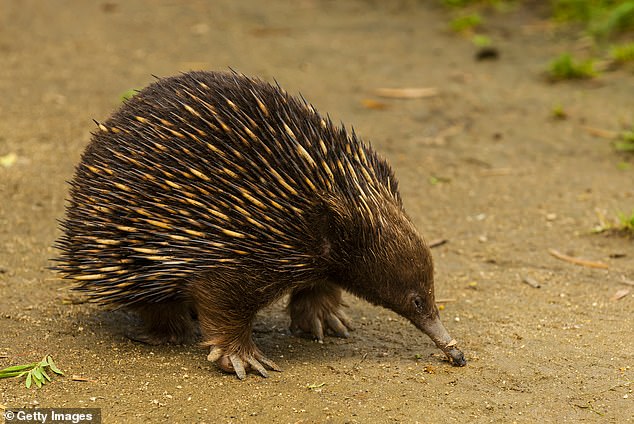
The echidna is native to Australia, has thorny pine trees, a bird-like beak, and a kangaroo-like pouch, and it also lays eggs.
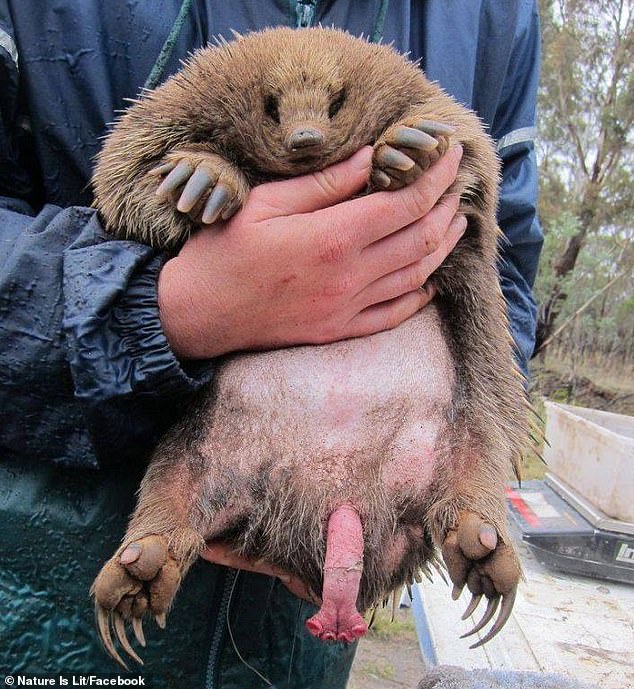
The echidna's “strange and unusual” penis remains a mystery to researchers who still don't understand why it has four heads
In case you want more interesting sex facts about the male short-beaked echidna, his testicles are internal (never descended) and he has no scrotum.
When not in use, the penis is stored internally and the ejaculate contains packets of up to 100 sperm that swim cooperatively until they reach the egg.
In most other species, sperm swim individually and each sperm is its own.
mantis
Probably one of the most famous — and extreme — sexual acts comes from the mantis, a cruel predatory insect.
The larger adult female devours the male during or after mating to provide her offspring with a source of nutrition as they grow.
Sometimes the female partially eats the male before he mounts her – but rather than seeing this as a sexual error, the male continues regardless.
“In this case, the headless wonder moves its legs until its body touches hers, climbs onto its back, and mates as if nothing is wrong,” behavioral ecologist Marty Crump wrote.
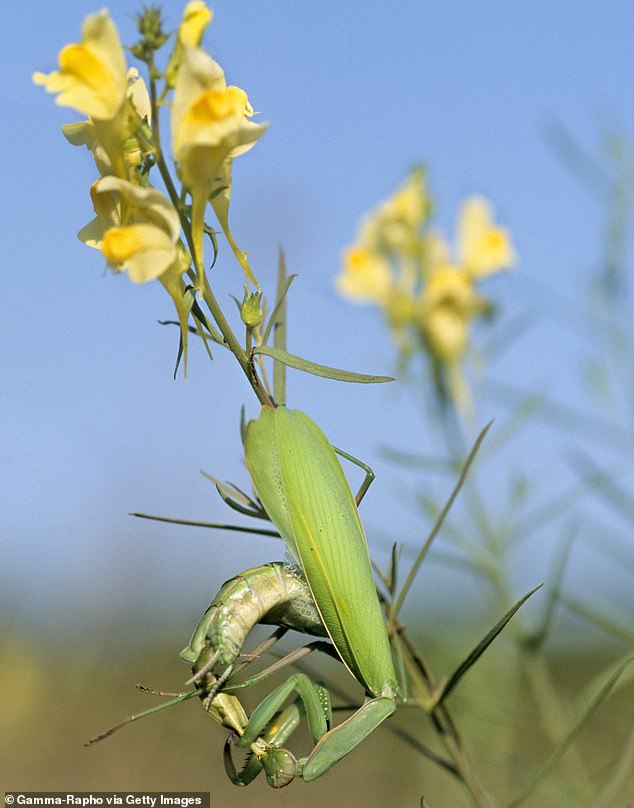
In this photo, taken in the Briny Regional Natural Park in France, a female praying mantis eats a male just after mating. This behavior is especially common when the female is starving
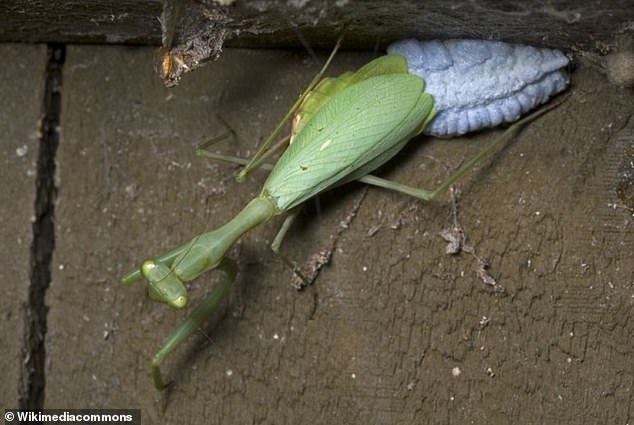
Pictured is a specimen of a female South African praying mantis (Miomantis caffra) laying eggs. This species is a medium-sized praying mantis with one of the highest known rates of pre-copulatory cannibalism. More than 60% of sexual interactions end with male consumption, often without mating
Some of the bravest male praying mantises wrestle with their mate in an attempt to avoid being eaten, resulting in a violent and exciting struggle.
There are more than 2,400 different species of praying mantises, or mantises, that have been given the extra “prayer” due to their prayer-like posture.
About 90 percent of predatory species of praying mantis exhibit sexual cannibalism, according to the Paper 2009.
ORB-WEB SPIDER
Another species of sexual cannibal is the orb-web spider (Nephilengys malabarensis), but the male has an ingenious solution to help him survive.
His sperm-transporting organs called palps — which are located on the side of his head and resemble a penis — can be separated from the rest of his body.
This means that the male spider can leave his penis to finish impregnating the female while he is out, reducing the possibility of him being killed.
This type of “distance intercourse” increases the total amount of sperm transferred and is thought to enhance the male's chances of becoming a father.
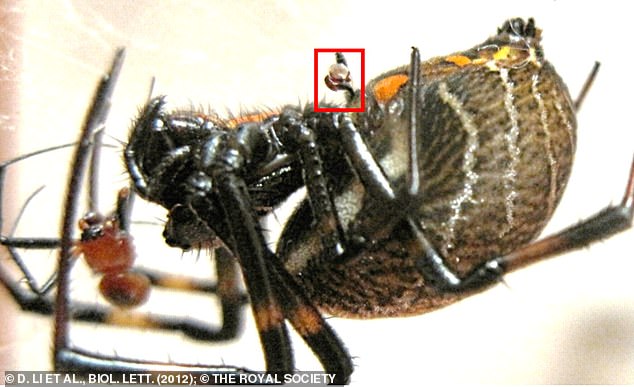
In the photo, a female orbital web spider with a truncated male body (in red) still has its sexual organs lodged. The half-eaten smaller companion is on the left
An additional advantage of the detachable penis is that it will “act as a plug” to prevent other males from mating with the female. 2012 study He said.
Losing his virginity also means losing weight, making him more flexible and able to fend off other males.
The freshness of the banana
Banana slugs — named for their bright yellow color — are hermaphrodites, meaning they have both male and female reproductive organs.
They usually mate, with both slugs delivering sperm and laying eggs, but on rare occasions they fertilize themselves.
Two banana slugs will also engage in an elaborate courtship dance, circling each other, nudging each other with their tails and nibbling on each other's bodies.
They eventually entangle before intercourse begins, which can take several hours as the two take turns transferring sperm from one to the other.
The banana slug's male reproductive organs can be as long as its entire body, making its penis-to-body ratio one of the largest known to scientists.
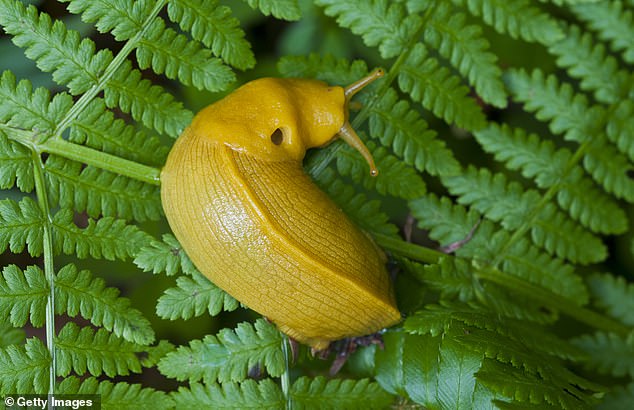
Banana slugs usually mate, with both slugs transferring sperm and laying eggs, but in rare cases they fertilize themselves.
Male banana slugs must choose their mates carefully, because if the female is too small, her penis may get stuck.
Unable to withdraw anymore, the only option left is to bite off the other slug's genitals.
Porcupine
Porcupines are what can only be described as a highly specialized sexual fetish.
It involves the male drenching the female in urine from a distance of about seven feet (two metres).
If she is not ready to mate, she will shake off the urine and leave.
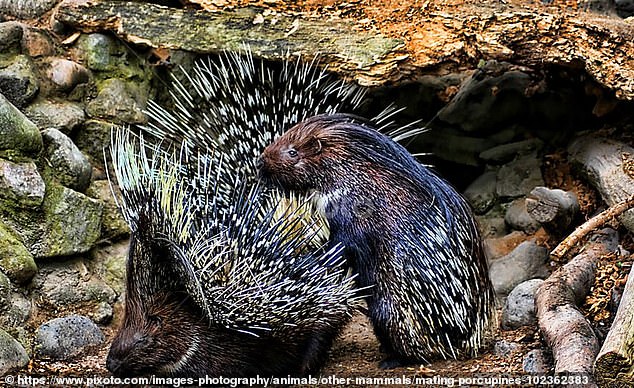
Porcupines have what can only be described as a highly specialized sexual fetish that involves urine (archive photo)
But if he turns her on and she likes his pheromones, they will mate, and she won't let him stop until he's physically exhausted.
When this happens, the insatiable female finds another prickly mate with a full bladder.
Perhaps not surprisingly, sex with porcupines is very rare because females are only receptive to sexual advances for 8 to 12 hours per year.
You might imagine that having sex with a porcupine would be a prickly affair due to their sharp spines, but in reality, both animals relax their spines to avoid injury.
Anglerfish
Deep-sea anglerfish take sexual intimacy to the next level by “merging” their bodies with their partners when mating.
In a stunning display of sexual submission, the tiny male anglerfish becomes permanently attached to the relatively gigantic female.
This causes their tissues to fuse and the two animals to create a common circulatory system, a Study 2020 is found.
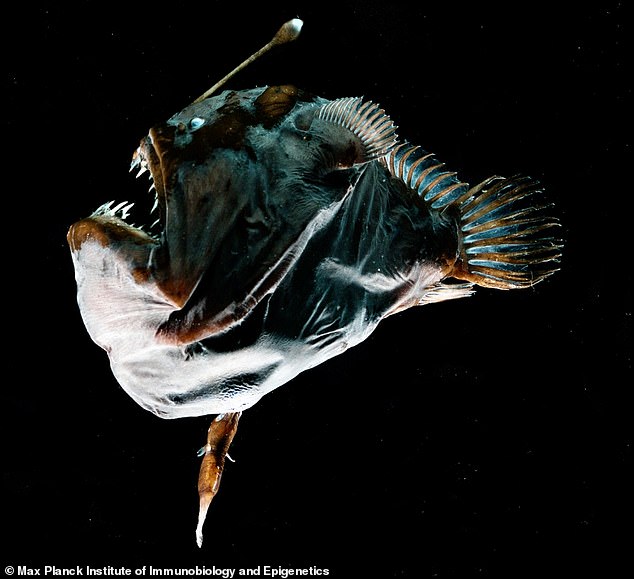
In this photo, it's easy to miss the male anglerfish attached to the larger female. Look at her stomach towards the bottom of the photo
The male becomes completely dependent on the female for nutrients, like a developing fetus in the mother's womb – a process called “sexual parasitism.”
In a display of incredible fidelity from the female, the male provides his partner with sperm while at the same time receiving these nutrients.
Ultimately, what seems strange to us about the erotic practices of another animal comes from thousands of years of evolution – and it's worth keeping in mind that we're not very natural.
Humans are one of the few species that have sex for pleasure, relieve stress, and establish emotional bonds with each other.
Our penchant for kinky sexual stuff – from bondage to voyeurism and feeding – also sets us apart.
(Tags for translation)dailymail
